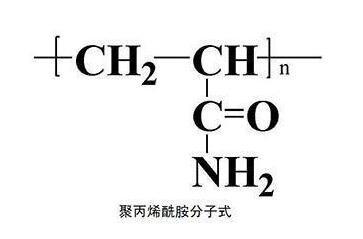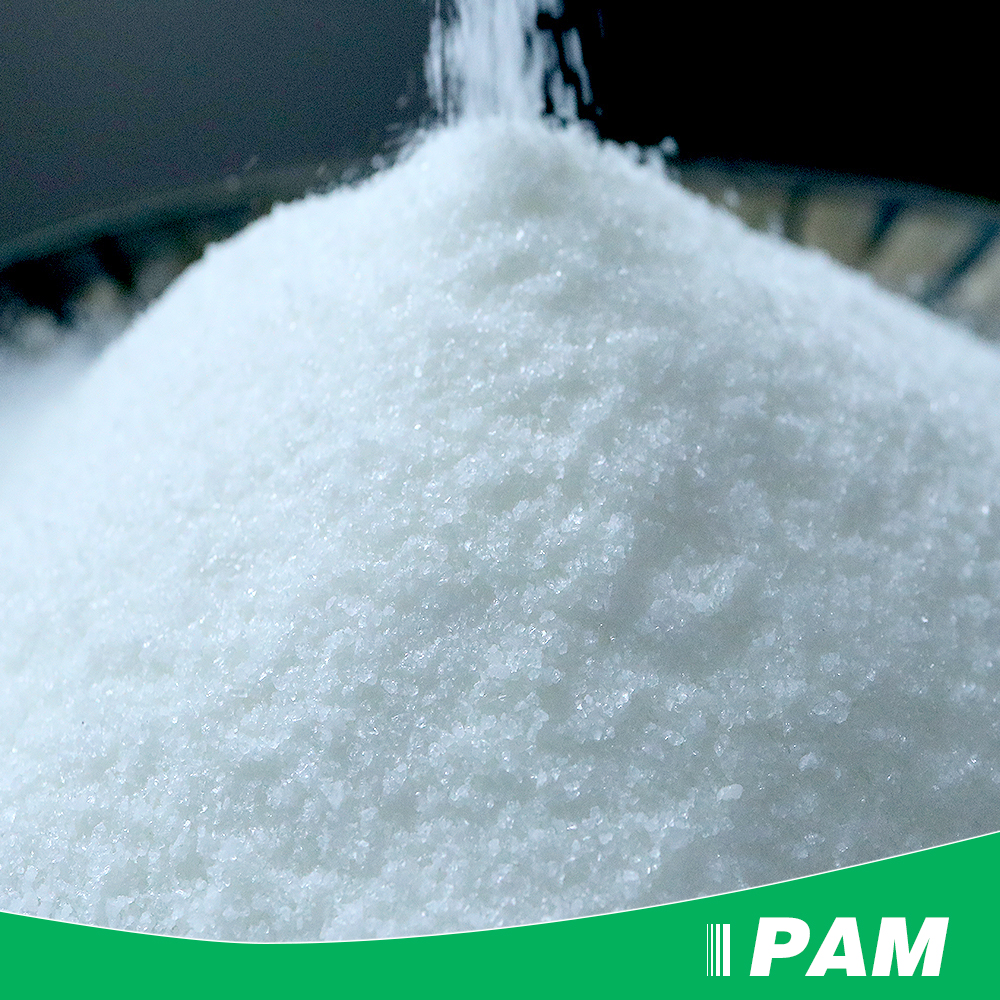
As a leading manufacturer specializing in polyacrylamide production, Tairan Chemical is committed to providing high-quality water-soluble polymer solutions. Understanding the polyacrylamide structure is essential for maximizing its effectiveness in water treatment and industrial applications. In this guide, we explore the molecular structure of polyacrylamide (PAM), examining how its unique chemical structure enables superior performance in removing impurities in water. Whether you're optimizing treatment processes or exploring advanced polymer products, this analysis of the structure of polyacrylamide provides valuable insights into this versatile polymer chemistry solution.

Polyacrylamide structure consists of repeating acrylamide monomer units (CH₂=CH-CONH₂) that link together to form long polymer chains. The molecular formula is (C₃H₅NO)ₙ, where n represents the degree of polymerization, typically ranging from hundreds to millions of units.
The fundamental chemical structure contains two critical components:
The Vinyl Group (CH₂=CH–): This carbon-carbon double bond serves as the reactive site during polymerization. When exposed to free radical initiators, these bonds open, allowing monomers to connect sequentially through carbon-carbon single bonds.
The Amide Group (–CONH₂): This functional group provides water solubility by forming hydrogen bonds with water molecules. The numerous amide groups along the polymer chain make PAM an exceptional water-soluble polymer, capable of dissolving completely in aqueous solutions.
The resulting molecular structure can be represented as: [–CH₂–CH(CONH₂)–]ₙ
In aqueous solutions, polyacrylamide adopts a random coil configuration, with polymer chains extending throughout the water. This three-dimensional structure is critical for PAM's ability to bridge between suspended particles, making it highly effective for removing impurities in water through flocculation.
The versatility of polyacrylamide structure comes from various modifications that create different PAM types with distinct properties.
Linear Polyacrylamide consists of unbranched polymer chains that move freely in solution. This structure provides excellent water solubility and is ideal for water treatment applications where high mobility enables effective particle bridging.
Cross-Linked Polyacrylamide features polymer chains connected through covalent bonds, creating a three-dimensional network. This gel-like structure has reduced water solubility but enhanced mechanical strength, making it valuable for soil conditioning and applications requiring structural integrity.

Anionic Polyacrylamide (APAM) contains negatively charged carboxylate groups (–COO⁻), introduced through hydrolysis or copolymerization with acrylic acid. The degree of hydrolysis typically ranges from 15-35%. This structure of polyacrylamide excels at treating water with positively charged particles, including clay, metal hydroxides, and organic matter.
Cationic Polyacrylamide (CPAM) incorporates positively charged quaternary ammonium groups into the polymer chain through copolymerization with cationic monomers. Cationicity ranges from 10-80%, with higher values providing stronger charge neutralization. CPAM is exceptionally effective for municipal and industrial wastewater containing negatively charged particles like bacteria, algae, and organic colloids.
Non-Ionic Polyacrylamide (NPAM) maintains the basic structure without charged groups. This neutral molecular structure offers pH-independent performance and can achieve the highest molecular weights (up to 25 million Daltons). NPAM works through pure physical bridging, making it ideal for applications with mixed-charge particles or variable pH conditions.
The molecular structure of polyacrylamide directly influences its effectiveness in water treatment. Higher molecular weight PAM (5-20 million Daltons) creates longer chains capable of bridging greater distances between particles, forming larger, more stable flocs. However, these longer chains are more sensitive to mechanical shear.
Charge density significantly impacts performance. Medium charge density (25-30% for APAM, 30-50% for CPAM) typically provides optimal balance between charge neutralization and bridging effects for most applications. The chemical structure with appropriate charge density delivers superior quality solutions for removing impurities in water.
Understanding polyacrylamide structure enables effective application across diverse industries:
Water Treatment: The water-soluble polymer characteristics of PAM make it invaluable for purifying drinking water and treating wastewater. PAM effectively removes suspended solids, reduces turbidity by 90-95%, and enhances filtration processes. For synthetic water and industrial wastewater, customized polymer products deliver quality solutions meeting stringent discharge standards.
Soil Conditioning: In agriculture, polyacrylamide improves soil structure by stabilizing aggregates and reducing erosion by up to 95%. Cross-linked PAM absorbs water up to 400 times its weight, increasing water retention and reducing irrigation requirements by 30-50%.
Enhanced Oil Recovery: The petroleum industry employs high molecular weight PAM to increase oil production by altering reservoir fluid properties. The polymer increases water viscosity, improving sweep efficiency and mobilizing trapped oil.
What makes polyacrylamide a water-soluble polymer?
The structure of polyacrylamide contains numerous amide groups (–CONH₂) that form hydrogen bonds with water molecules, providing excellent water solubility. Ionic forms contain additional charged groups that further enhance solubility through ion-dipole interactions.
How does polyacrylamide remove impurities from water?
The molecular structure enables two mechanisms: charge neutralization (ionic PAM neutralizes opposite charges on particles) and bridging (long polymer chains physically connect multiple particles into large flocs that settle rapidly).
What's the difference between anionic, cationic, and non-ionic PAM?
The difference lies in the chemical structure: Anionic PAM contains negative charges (effective for positively charged particles), Cationic PAM contains positive charges (effective for negatively charged particles), and Non-ionic PAM has no charges (works through pure physical bridging).
At Tairan Chemical, we produce a comprehensive range of polyacrylamide structure products tailored to your specific needs. Our expertise in polymer chemistry ensures you receive the highest quality solutions for water treatment, agriculture, and industrial applications.
Contact us today to discuss how our advanced polymer products can optimize your processes and deliver superior results in removing impurities in water and beyond.